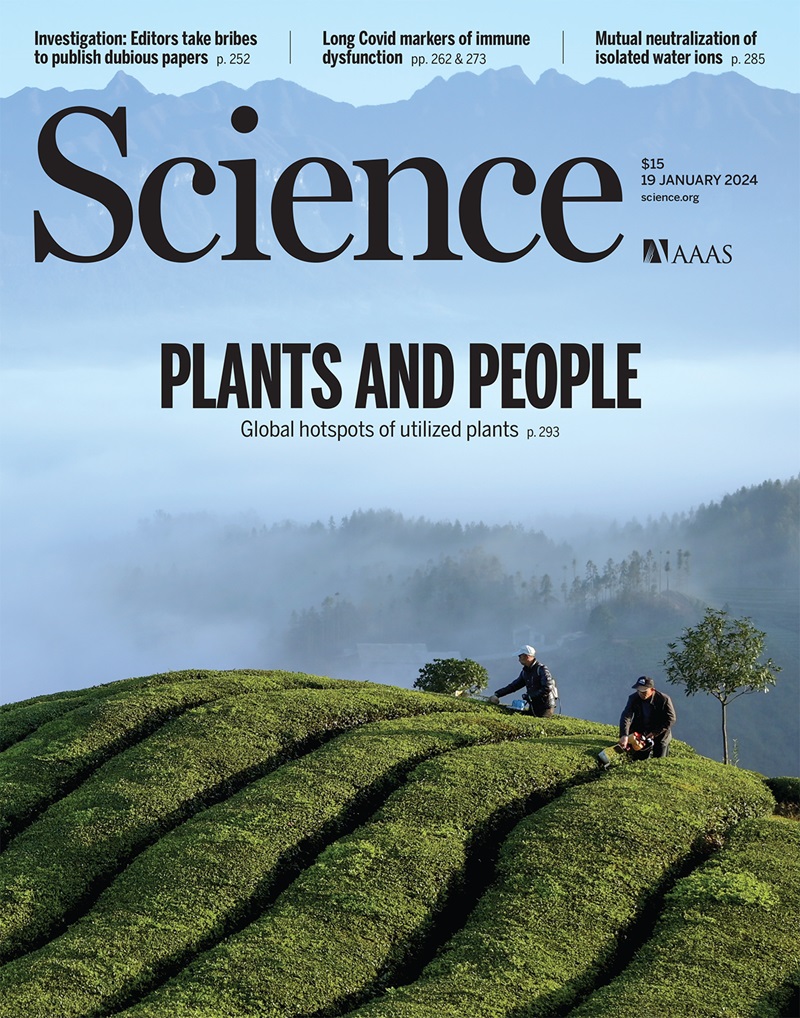周期的功能多态性是飞蛾滞育变异的基础
IF 44.7
1区 综合性期刊
Q1 MULTIDISCIPLINARY SCIENCES
引用次数: 0
摘要
滞育是一种常见的季节性适应策略,可以调节昆虫的年度时间。目前还很少发现滞育变异的原因位点。通过交叉定位和全基因组关联分析,我们确定了时钟蛋白CYCLE的N端是蚕蛾胚胎滞育差异的主要因果效应因子。我们发现,多伏特菌株的非滞育表型是由一个特定的缺失引起的,该缺失破坏了CYCLE的另一个异构体。我们进一步证明,不同的CYCLE异构体有助于调节昼夜节律和滞育的功能多样性,这种功能在鳞翅目中至少保存了1.1亿年。我们的研究提出了一个模型,解释了适应性表型如何在不影响相关基本功能的情况下快速进化。本文章由计算机程序翻译,如有差异,请以英文原文为准。

Functional polymorphism of CYCLE underlies the diapause variation in moths
Diapause is a common seasonal adaptive strategy that regulates annual timing in insects. Very few causal loci underlying diapause variation have yet been identified. By leveraging cross-mapping and genome-wide association analysis, we identified the N terminus of the clock protein CYCLE as a major causal effector underlying embryonic diapause differences in the silk moth. We found that the nondiapause phenotype in polyvoltine strains results from a specific deletion that disrupts an alternative isoform of CYCLE. We further demonstrated that different CYCLE isoforms contribute to a functional diversity in modulating circadian rhythms and diapause, which has been preserved in Lepidoptera for at least 110 million years. Our study proposes a model that explains how adaptive phenotypes can evolve rapidly without affecting related essential functions.
求助全文
通过发布文献求助,成功后即可免费获取论文全文。
去求助
来源期刊

Science
综合性期刊-综合性期刊
CiteScore
61.10
自引率
0.90%
发文量
0
审稿时长
2.1 months
期刊介绍:
Science is a leading outlet for scientific news, commentary, and cutting-edge research. Through its print and online incarnations, Science reaches an estimated worldwide readership of more than one million. Science’s authorship is global too, and its articles consistently rank among the world's most cited research.
Science serves as a forum for discussion of important issues related to the advancement of science by publishing material on which a consensus has been reached as well as including the presentation of minority or conflicting points of view. Accordingly, all articles published in Science—including editorials, news and comment, and book reviews—are signed and reflect the individual views of the authors and not official points of view adopted by AAAS or the institutions with which the authors are affiliated.
Science seeks to publish those papers that are most influential in their fields or across fields and that will significantly advance scientific understanding. Selected papers should present novel and broadly important data, syntheses, or concepts. They should merit recognition by the wider scientific community and general public provided by publication in Science, beyond that provided by specialty journals. Science welcomes submissions from all fields of science and from any source. The editors are committed to the prompt evaluation and publication of submitted papers while upholding high standards that support reproducibility of published research. Science is published weekly; selected papers are published online ahead of print.
 求助内容:
求助内容: 应助结果提醒方式:
应助结果提醒方式:


